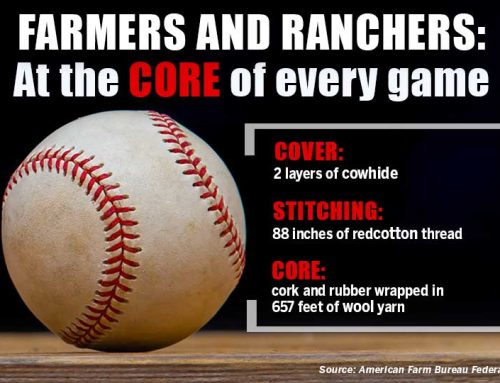By Julie Tomascik
Beef is “greener” than you’ve been led to believe.
In fact, livestock production is sustainable, and the beef industry has long implemented sustainability practices to get the product from gate to plate.
Bite into these 5 beefy facts to learn more:
1. Cattle convert plants into protein
Upcycling and recycling are trendy, and cows have been doing it for hundreds of years.
Cattle convert plants than are inedible for humans into high-quality protein.
In the U.S., there are about 800 million acres of land that are not suitable for growing crops due to factors like soil conditions, environment and lack of rain. But that land has native grasses that cattle are able to upcycle into tasty protein for humans. Now that’s what I call a win-win!
2. Low greenhouse gas emissions compared to other sources
Some say beef is the largest culprit of greenhouse gas emissions. But we call bull on that.
In fact, beef cattle accounts for a tiny amount of greenhouse gas emissions—only about 2%, according to the U.S. Environmental Protection Agency. And beef cattle production as a whole, including production of animal feed, is responsible for only 3.7% of greenhouse gas emissions in the U.S.
The staggering majority of greenhouse gases are due to transportation at 28% and electricity generation at nearly 25%.
3. Beef has many health benefits
The internet is full of trendy diets with conflicting advice. But one fact you can always count on—beef is part of a healthy diet.
Beef contains many essential nutrients, including iron, zinc, vitamin B12 and more. It’s packed with health-promoting amino acids, full of vitamins and it comes in a delicious package with relatively few calories.
4. Cattle are more than beef
Although the first thing we often think about is beef when it comes to cattle, they’re responsible for so much more. Medicine. Shampoo. Textiles. Jobs. And many other items we use daily.
Cattle help provide us these numerous products and also return value to the ecosystem through grazing.
5. Cattle help with land management
Grazing cattle can reduce the land’s natural emissions of nitrous oxide, a greenhouse gas that environmentalists agree is more damaging than carbon dioxide.
Cattle also can help manage the forage that fuels wildfires. By grazing down forage, cattle eliminate some of the fuel. Combine that with other management techniques, and research shows the number of wildfires and the severity of the fires could be reduced.
You’ve placed an emphasis on sustainability. So have farmers and ranchers for generations. They’ll continue to do so, too.
They have embraced technologies that reduce emissions and increase efficiency. Farmers and ranchers do more with less, because they are committed to producing the world’s food, feed and fiber in a sustainable way. (Click here to see how.)
As for cattle, they upcycle land that is unsuitable for human food consumption and sequester carbon while doing so. Plus, they improve the soil and provide us with protein we love to enjoy.
And we can. Guilt free.
So, grill that steak or bite into your hamburger. Eat your veggies. And enjoy a cold glass of milk with your dessert. And tip your hat to the Texas farmers and ranchers who helped bring that to your table in a sustainable way.











This is a great article that should be printed in all our local newspapers. We have been raising cattle in Texas for over 100 years, and highly resent the idea they are responsible for anything harmful to humans. We love our cows and keep them fat by not overgrazing our land. This is not just a cash crop for us. It’s a relationship with an animal that does all the things this article recounts, and everybody should know it.